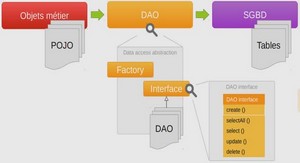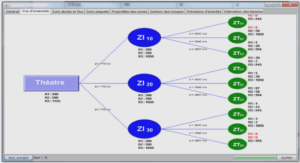spring of artificial intelligence
In 1956, artificial intelligence (AI) was formally established as an academic discipline during the Dartmouth workshop. After that, it has gone through a series of boom-bust cycles. Because of the half-century efforts, it has become a prosperous field with many practical applications and active research subjects [5]. AI has already several mature capabilities for perceiving, understanding, self-learning, and reasoning. Advances in AI technology have opened up broader markets and new opportunities in the domains such as health, finance, communication, education, energy, manufacturing and logistics, etc [6].
AI is one of the newest fields in science and engineering, it is committed to build intelligent systems and to learn how to improve system performance by the use of experience. It encompasses a huge variety of subfields such as natural language processing, knowledge representation, pattern recognition, automated reasoning, machine learning (ML) and data mining (DM), etc. Moreover, AI is also an interdisciplinary field which is inspired by other disciplines: philosophy, mathematics, economics, neuroscience, psychology, computer engineering, linguistics, control theory and cybernetics [7]. Technological progress of computer science in the fields of big data, algorithmic development and processing power have made the performance, accessibility, and costs of AI more favorable than ever before [6].
AI systems are designed to evaluate, categorize and learn received data, and then output inferences concerning insight, decision or conclusion. Today, the great success of academic and industrial research in speech recognition [8, 9, 10, 11], image processing [12, 13], medical diagnosis [14, 15, 16, 17], and game AI [18, 19, 20] has triggered another new wave of AI. Almost all the famous universities and science & technology giants in the world have increased their investments in AI research [6, 21]. At the same time, many counties have treated AI research as a national priority or a national strategic goal [22] and have constantly raised their research and development budgets. More and more companies such as NVIDIA, Intel, Qualcomm and Samsung are developing machine-learning chips to enable real-time applications in Internet of things (IoT) devices [23]. Among branches of computer science, AI is the only field to attempt to build intelligent systems that will function autonomously in complex, changing environments [7]. Therefore, it serves as the preferred solution for more and more practical problems. AI has become ubiquitous and ambient in our personal lives. Many industries are gradually turning into the AI-driven ones.
AMBIENT INTELLIGENCE
Ambient Intelligence (AmI) is a paradigm of AI that supports the design of next generation of intelligent systems and introduces innovative means of communication among human beings, machines and living environments [24, 25]. It is a prospective solution for intelligent living assistance that takes advantage of cutting-edge technologies to improve habitual supports [26]. With huge commercial prospects and rapid development of information and communication technologies (ICT) in recent years, smart environments have become a very active research topic. As a promising intervention for intelligent living assistance, smart environments, also known as one of the most successful applications of AmI, is to support residents by providing appropriate assistance while carrying out activities .
As an emerging interdisciplinary domain, in addition to advanced data analysis techniques, AmI also incorporates multiple cutting-edge technologies such as Internet of things (IoT) and wireless sensor network (WSN), etc [24, 27, 28]. Recent advances in these techniques present unprecedented opportunities to research and develop intelligent living environments. They embed computer intelligence into home devices that allow electronics, software and actuators to connect, interact and exchange data. They can also provide a convenient way to measure home conditions and monitor home appliances [29].
AmI applications usually have the following characteristics: firstly, they are aware of environmental changes. Secondly, with the support of computational units, they can rapidly respond to a variety of requirements in a short time. Thirdly, they can provide better personal interactive experiences concerning context awareness. Context-aware systems offer entirely new opportunities for application developers and for end users by gathering context data and adapting systems behavior accordingly [30].
AmI utilizes IoT to build a network of objects embedded with measurable electronic components like sensors, radio frequency identification (RFID) tags/readers, power analyzer or actuators to gather data continuously from the smart environments [31, 32]. Target objects include home appliances, household furniture, and the other daily commodities. In recent years, considerable attention has also been paid to wearable devices, to collect user’s behavioral information or vital signs [28]. These ubiquitous electronics make it possible to achieve real-time monitoring and avoid risks at the earliest stages.
A wireless sensor network (WSN) can be defined as a network of sensor nodes, which are spatially distributed and work cooperatively to communicate information gathered from the monitored fields through wireless links [33]. In home care, sensor nodes can help to monitor residents in a smart home in order to guarantee their safety and independence. However, the gathered data are usually large-scale and chaotic. It is very hard to directly use it. At this time, effective data analysis processing models are critical for parsing the behavioral data of residents. Moreover, AmI could seamlessly integrate sensors, processing, and interfaces such as touchscreen, speech processing, assisted social robots or any other advanced HCI technologies with daily activities [34]. Ideally, AmI needs to be sensitive to the needs of residents. Real-time situations will be analyzed and appropriate feedbacks or interventions will be given out.
Besides, due to heterogeneous components, AmI continuously produces large-scale data. Such output data can involve environmental changes (positions, movements, temperature, and pressure, etc.), and consumption (energy or resources) [6, 27]. It is usually temporal and sequential, even unstructured and chaotic. Without advanced and effective data analysis methods, it is not possible to analyze such numerous data. As a consequence, machine learning and data mining, two subfields of artificial intelligence, are indispensable to automatically interpret, infer and understand the current situation, for the purpose of responding real-time requirements of residents [25, 26].
1 General Introduction |





